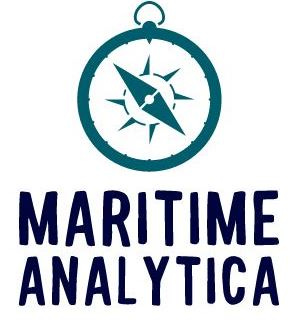✨ What If Jeff Bezos Ran a Global Shipping Empire—How Would It Change?
⚡ 10 Game-Changing Innovations That Would Reshape Shipping with Amazon-Style Efficiency
🌟Follow us: YouTube / LinkedIn / LinkedIn Newsletter / Survey / 🔥Q3 Report!
🔥 Greetings, Maritime Mavericks!
🚢 What if container shipping moved as fast as Amazon Prime? What if ports operated with the precision of fulfillment centers? Imagine a shipping industry powered by AI, automation, and relentless customer obsession. Welcome to Bezos’ maritime revolution!
⚡ Jeff Bezos, the mastermind behind Amazon’s logistics empire, steps into global shipping. A sector known for delays, inefficiencies, and outdated systems is now primed for an Amazon-style transformation.
As Bezos famously said: “If you double the number of experiments you do per year, you're going to double your inventiveness.”
So, what happens when ruthless efficiency, AI-driven logistics, and data-powered decision-making reshape global trade? Let’s dive in. 👇
🚀 1. Amazon Prime for Freight
📜 Amazon Leadership Principle: Customer Obsession "Leaders start with the customer and work backward."
Ports would function like Amazon’s fulfillment centers, reducing delays from days to hours. AI-driven logistics would predict cargo movements and optimize loading times. Same-day container shipping? Not impossible anymore.
Example: Amazon’s Prime shipping model enables same-day and next-day delivery through predictive logistics.
Alignment: Maersk’s TradeLens project attempted real-time cargo tracking and automation. But failed due to lack of full industry trust.
Impact: Reduces shipping lead times and boosts supply chain reliability.
🤖 2. AI & Robotics for Ports
📜 Amazon Leadership Principle: Invent & Simplify "We seek out new ways to serve customers and simplify processes."
Automated cranes and AI-powered sorting would eliminate bottlenecks at terminals. Robots would handle container stacking like Amazon’s warehouses. Port efficiency would double while costs drop.
Example: Amazon’s warehouses use Kiva robots to automate inventory sorting, increasing efficiency.
Alignment: Rotterdam’s Maasvlakte II terminal operates fully autonomously, reducing loading times
Impact: Cuts labor costs and doubles port efficiency.
🌎 3. One-Click Freight Booking
📜 Amazon Leadership Principle: Deliver Results "We focus on the key inputs for our business and deliver them with the right quality and in a timely fashion."
A digital freight marketplace would let shippers book cargo instantly. AI would adjust rates in real time based on supply, demand, and fuel costs. No more waiting weeks for price quotes.
Example: Amazon’s automated pricing algorithms dynamically adjust based on demand fluctuations.
Alignment: Freightos enables instant ocean freight rate comparison but lacks full industry adoption.
Impact: Eliminates price volatility and gives businesses greater control.
🚁4. Drone-Powered Cargo Delivery
📜 Amazon Leadership Principle: Think Big "Thinking small is a self-fulfilling prophecy. Leaders create and communicate a bold direction."
Drones could deliver spare parts mid-sea. Emergency cargo—medicines, electronics, or urgent orders—delivered in minutes. Maritime logistics faster, smarter, and more reliable.
Example: Amazon’s Prime Air drones have proven successful in delivering packages in minutes.
Alignment: Rolls-Royce has tested unmanned cargo ships and drone logistics.
Impact: Eliminates vessel downtime and improves emergency logistics.
⚡ 5. Ultra-Fast Transshipment Hubs
📜 Amazon Leadership Principle: Bias for Action "Speed matters in business. We value calculated risk-taking."
Bezos would create floating fulfillment hubs near major trade routes. AI-driven sorting would pre-load containers for final destinations, cutting unnecessary port stops. Ships wouldn’t need to dock for minor cargo transfers.
Example: Amazon’s regional sorting hubs speed up last-mile deliveries.
Alignment: DP World’s Jebel Ali Free Zone enables faster inland distribution.
Impact: Eliminates port bottlenecks and cuts transit times dramatically.


